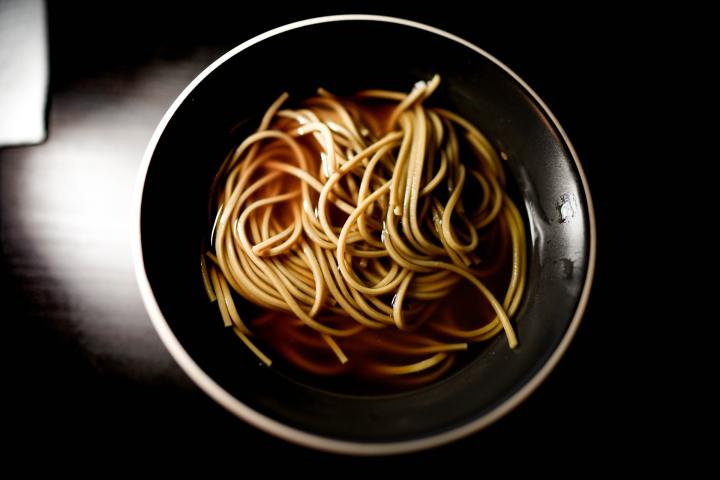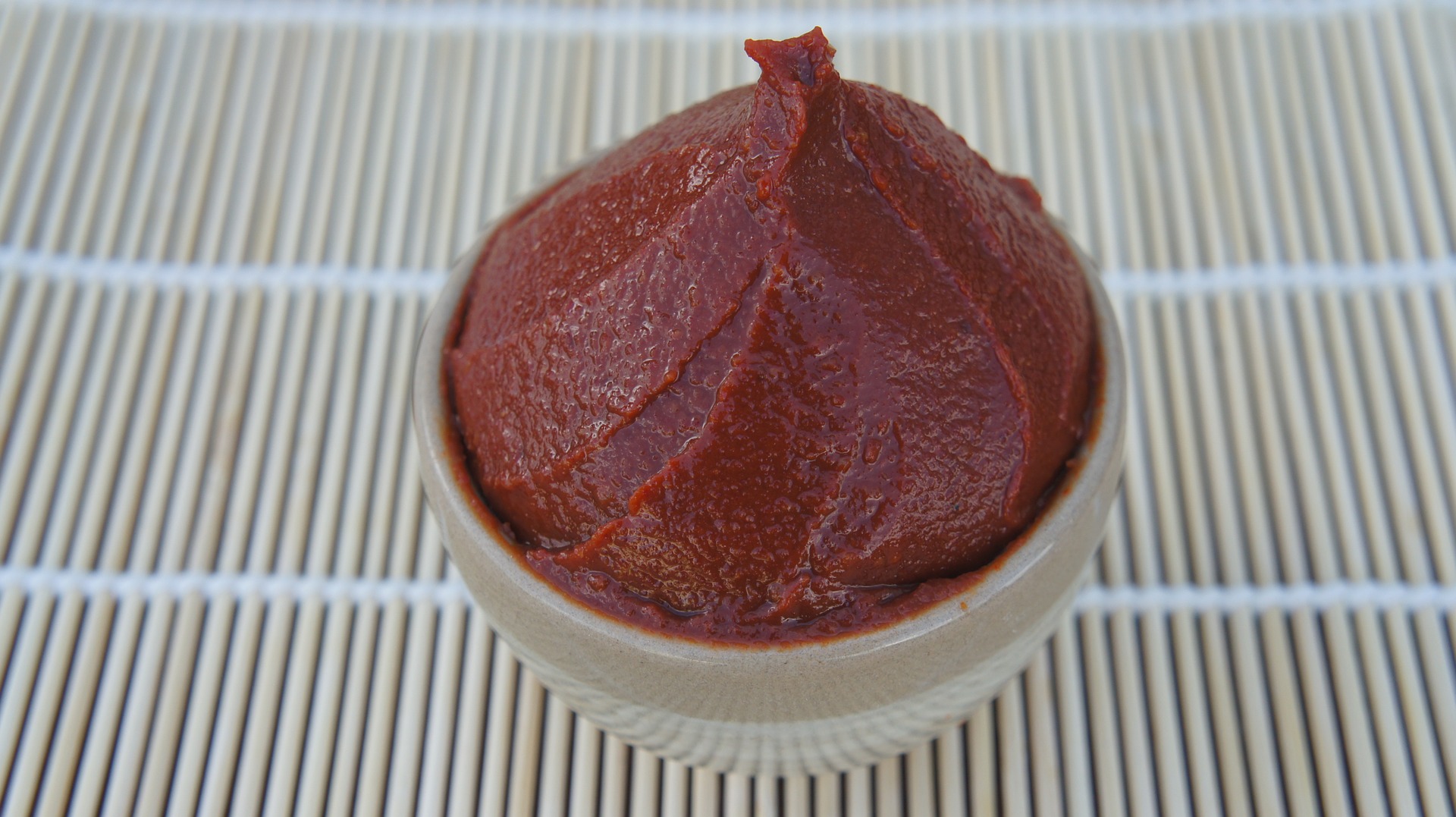GASTROTURF
By Order: My Big Fat Asian Ingredients Bender

With 30 or so Asian ingredients on their way to me this week, now would seem an opportune time to start dipping into my favourite book of Asian ingredients.
Mangosteen. A fruity wine? An Asian brick? Durian. A member of a galactic tribe from a space movie franchise? And mooli? That French kitchen thingy, right? (But misspelt.) Nope; they’re all part of the Asian pantry.
It can be frustrating shopping for food ingredients in a small town at the best of times. In a pandemic and under lockdown it gets tougher. You can grow guavas in your backyard. You can grow lemons and peaches, green peppers and chillies, potatoes and tomatoes. But you can’t grow mirin, cultivate ponzu or plant a water chestnut tree next to the kokerboom. In fact, water chestnuts are little tubers that grow among the roots of a sedge (a grass-like flowering plant), in marshes and ponds. I have some on their way to me, right now, which is where this column is headed. (Nor is mirin grown, we know, nor ponzu cultivated.)
Having ordered a shed load of Asian ingredients online this week, my mind flew back to Chichester circa 2002-6, when I got to know Thuy very well. Everyone at the local newspaper office loved Thuy La, a Vietnamese genius who was one of my favourite colleagues in the Chichester years. If you had a tech question, Thuy was your point of call. We took to each other early on, perhaps in part because both of us had our origins very far away. Though Thuy (who has two sisters, called Thuy and Thuy; the difference is in the inflection, not the spelling) had been born in Vietnam, she had a southern English accent, more Portsmouth than Brighton, rolled rrrrrs and all. If you’d only ever spoken to her on the phone you’d have a very different mental image of her. Thuy had been one of the Vietnamese “boat people” as a little girl, saved from drowning and shipped off to England.
For a birthday in 2005, Thuy gave me a book. It’s over there on the bookshelf in my study right now, looking at me and reminding me of our times working together in the third floor office where Thuy did very clever things with images and page layouts and other more technical matters, while I sat at a desk nearby editing the weekend tabloid magazine, monthly issues of etc, a lifestyle magazine we launched there, a bi-monthly glossy property magazine called Exclusive Homes in Sussex, and the occasional motoring supplement. Thuy always had BBC Radio 2 playing, and the morning music show hosted by the purry-voiced Terry Wogan, master of the throwaway one-liner, was the soundtrack of that time for us.
Thuy knew I was a food nut, so she added to my cookbook collection one that has long since been a favourite: The Cook’s Guide to Asian Ingredients, a Fully Illustrated Encyclopaedia of the Far Eastern Kitchen, by Sallie Morris and Deh-Ta Hsiung.
With 30 or so Asian ingredients on their way to me this week, now would seem an opportune time to start dipping into it again. Yet, even a cursory glance through the ingredients index tells me that those 40 ingredients will barely skim the surface of a book that tells you almost anything you’re likely to wonder about. Where do you find arrack spirit, and what do you use it for? Where does a beefsteak plant grow (and can you grow one next to your braai)? What are cloud ears, durians and mangosteens, and how do you cook taroes? (Answers, in short: East Indies; drinking; a variety of basil grown in China, Korea, Laos and Vietnam; probably but it’s not actually steak; wood or tree mushrooms; a huge tropical fruit; ugly little apple-like fruits with flesh that looks like lychee but doesn’t taste like it; and, much as you’d cook any other sweet potato.
Envious, I admit to have been, of city friends buying mirin and miso, ponzu and soba noodles, on their shopping jaunts (or delivery shops; such companies tend not to deliver far afield, so we remain cut off from all that). I consequently went a bit mad with an online order when my daughter pointed out that their pending visit to us meant I could order for delivery to them in the city, and they would do the longer-distance delivery. These Asian ingredients have become pretty mainstream, but not so much in the Karoo. The Chinese family who own the biggest supermarket in town do stock a range of Asian ingredients, but most are Chinese, and there’s much more out there.

(Image of miso paste by Jinwoo Lee from Pixabay)
Somewhat stricken, I found that my first glossary search of the book brought up nothing. Yuzu, which as you city folks know very well is a citrusy paste named after the very bitter lemon-like fruit of the same name, but which tastes somewhere between a lemon, a lime and a tangerine (naartjie maybe?), is not listed.
Into the shopping cart went: first, brown rice vinegar, which can be compared to balsamic. It’s “dark and heady”, “robust yet wonderfully smooth”, and should not be heated for too long or “its fragrance will be lost, the food will taste extremely tart and rather unpleasant”. “In Asian cooking, therefore, rice vinegar is generally the last item to be stirred into a dish.” Now there’s a nugget of cooking knowledge. Oh and use it sparingly. So a bottle of rice vinegar should last a good while. Just a splash in the wok before serving sounds about right.
Ponzu sauce I love, but I haven’t bought any for years. The citrus-enhanced concoction of mirin, rice vinegar, kombu and katsuobushi flakes is not something one is likely to run up in the Karoo kitchen on a Saturday, so into the delivery order it went. I’m likely to use it as, or in, a marinade, in a vinaigrette, or in a little side bowl for dipping; it especially interests me as a baste for steak.
Yes, I know what sambal oelek is, but you try finding some at the Cradock Shoprite. The fiercely hot Indonesian chilli sambal sweetened with brown sugar can be used in pretty much anything that needs a chilli kick.
That caramel finish we all like in our braaied pork or beef sosaties is just one use I have in mind for the char siu sauce headed this way. Often misunderstood to mean barbecued pork, it really means the act of barbecuing itself, or “fork-roasted”. I’m planning to slather it onto a slab of lamb or pork rib before slow-cooking it on the side of the fire, then finishing over hot coals to get that red crunch on the fatty side.
I haven’t worked with soba (buckwheat) noodles before, so there’s something new to learn. Chef Solly Solomon at Millers Thumb in Tamboerskloof always had a soba dish on the menu, and I’ve always loved them. I’m likely to start with the soba noodles and the pure sesame oil that’s coming, and work from there; mirin, some soy, a hint of that ponzu perhaps. Snips of the Thai basil in the garden, maybe a few toasted peanuts. I find it’s wise, by the way, with Asian noodles, to follow the often amusing packet instructions. There’s no great mystery to it other than deciphering the Asianglish. When I do a wok dish, I put noodles in a bowl, boil a kettle, pour it over to more than cover the noodles, then leave it aside. When everything in the wok is cooked, I drain the noodles, toss them through with chopsticks and serve. No great mystery there.
As for the tempura flour in the order, that draws my mind to prawns, one thing you can get in the Karoo, believe it or not. You think your big-city prawns are fresh from the sea? We have freezers too, you know. Tempura-battered courgette, asparagus, mushrooms and more are great too.
A glance through the ingredients on order brings the realisation that I will have all the ingredients for a Chinese master sauce, about which more soon. I might also have a go at that most delectable of all fish dishes, black cod den miso. (Yes I know, black cod abounds in Karoo food shops. Obviously.)
The white and black sesame seeds, however, are likely to find a use outside of Asian cuisine in my kitchen. Both are a popular ingredient in Greek recipes involving phyllo pastry. Once a phyllo dish has been assembled, the next steps are often to sprinkle a little cold water over the top of the pastry, which mysteriously adds crunch during its time in the oven, and then a scattering of either white or black sesame seeds.
I thought I’d just flip open the book to a few random pages and see what I might dip into. Here’s ganbei, a.k.a. gong yu chu, Mandarin and Cantonese respectively for dried scallops. They’re scarce and consequently very expensive, and the best ones are “round and golden, with a delicate, sweet flavour”. Here’s fat sau gwa, or chayote, a pear-shaped marrow also known as Buddha’s Fist. It’s mild, not unlike courgette, and Asians cook it with strong flavourings such as garlic, chilli and onion.

(Image of chayote by Daniel Dan outsideclick from Pixabay)
And here, right next to it, is mooli, or daikon, which I have growing in my garden just outside that window over there.
With the family on their way any day now, and bringing with them all these lovely ingredients, best I unearth some and pickle it or, like many Asian home cooks, braise it with pork or beef or add it to a stir-fry. With some of that sweet soy, a dash of that ponzu, maybe a hint of sunchang doenjang (Korean miso paste). And toast Thuy with a glug of the mirin. Or not. It’s seriously sweet. Best add it to the dish and get the whisky out. DM/TGIFood





 Become an Insider
Become an Insider
Comments - Please login in order to comment.